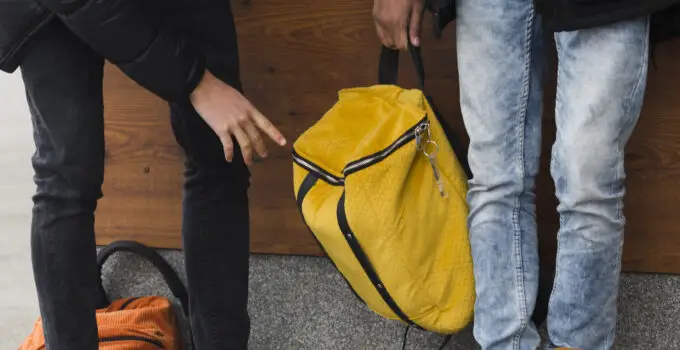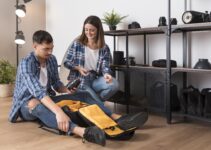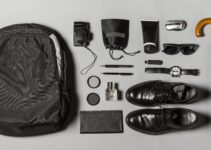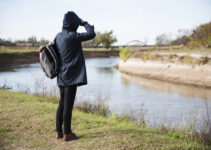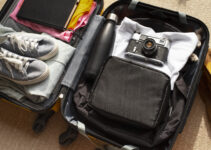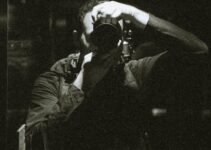Table of Contents
ToggleHow to pack porta brace camera bag?
Are you preparing for a shoot and wondering how to effectively pack your Porta Brace camera bag?
Organizing your gear is essential for ensuring that you have everything you need at your fingertips, while also keeping your equipment safe and secure.
A well-packed camera bag not only helps in efficient transportation but also allows for quick access during those crucial moments on set.
With various compartments and pockets designed to hold different items, knowing how to utilize your Porta Brace bag’s features can streamline your workflow.
Here’s a guide to help you pack your camera bag efficiently for any filming scenario.
Here 10 best stylish DSLR camera bag?
Is porta brace bag is different from porta brace dvo camera bag?
Yes, a Porta Brace bag and a Porta Brace DVO camera bag are different, although they share the same brand and cater to similar needs. Porta Brace is known for its high-quality, durable bags designed for camera and equipment transport.
The term “Porta Brace bag” is general and can refer to a wide range of products, including bags for various types of cameras, accessories, and equipment.
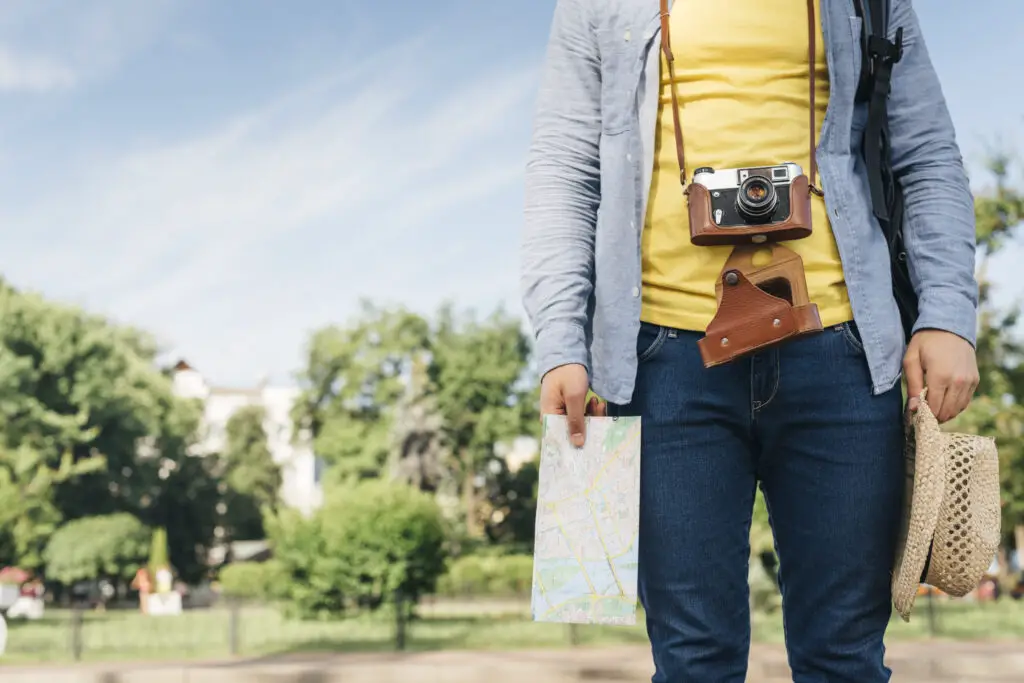
On the other hand, the Porta Brace DVO camera bag is a specific model tailored for video operators.
The DVO bag features a well-padded interior to protect cameras and lenses, a modular design for customizable storage, and weather-resistant materials.
It often includes additional compartments for accessories like batteries and cables. In summary, while both are made by Porta Brace and designed for camera equipment, the DVO bag is a specialized model with specific features aimed at video professionals.
Here, do you have to take your camera bag out of when going through airpot security?
Is it important to pack a porta brace camera bag?
Packing a Porta Brace camera bag properly is crucial for protecting your valuable equipment and ensuring you have everything you need for a shoot.
These bags are designed with padded compartments and customizable layouts, allowing you to organize your gear effectively. Proper packing helps prevent damage during transport, shielding cameras, lenses, and accessories from bumps and shocks.
Additionally, a well-packed bag makes it easier to access your equipment quickly and efficiently, which is especially important during a fast-paced shoot.
It also allows you to carry essential items like batteries, cables, and memory cards in designated spaces, reducing the risk of misplacing them.
Moreover, packing your Porta Brace camera bag strategically can help you maintain a balanced load, making it more comfortable to carry for extended periods.
Overall, taking the time to pack your camera bag thoughtfully ensures your gear stays safe and accessible, enhancing your overall shooting experience.
Things to know before packing porta brace camera bag
How to pack porta brace camera bag?- Before your pack here take a look.
Before packing your Porta Brace camera bag, there are several important factors to consider to ensure optimal organization and protection of your gear.
First, assess your equipment list and prioritize what you need for your shoot, including cameras, lenses, tripods, and accessories. This helps you determine the appropriate bag size and configuration.
Next, familiarize yourself with the bag’s layout and compartments.
Porta Brace bags often feature customizable dividers, so adjust them to fit your gear snugly, preventing movement during transport. Use padded inserts for added protection.
Here, vincent muneir what’s in his camera bag?
Consider the weight distribution when packing; place heavier items at the bottom to maintain balance. Additionally, keep frequently used items, like batteries and memory cards, in easily accessible pockets.
Lastly, be mindful of weather conditions and pack any necessary protective covers or rain gear if needed. By taking these steps, you’ll ensure your Porta Brace camera bag is packed efficiently and securely for your shoot.
7 Tips to pack porta brace camera bag
Here are seven tips for packing your Porta Brace camera bag effectively:
1. Assess Your Equipment
Before you start packing, take a comprehensive inventory of the gear you’ll be bringing on your shoot. This includes your camera body, lenses, tripods, audio equipment, and any accessories like batteries, filters, or cables.
By knowing exactly what you need, you can choose the right Porta Brace bag size and configuration to accommodate all your items comfortably.
Create a checklist to ensure you don’t forget anything important. Consider the specifics of your shoot, such as the location and duration, as this can influence what gear you bring.
For example, if you’re shooting in a remote area, extra batteries or a portable charger might be essential. On the other hand, if you’re doing an indoor shoot, you might not need as much gear.
By assessing your equipment ahead of time, you can also think about how you want to organize it within the bag. Group similar items together, such as placing all camera bodies in one section and lenses in another.
This planning will save you time and stress on the day of the shoot, ensuring that everything you need is packed and ready to go.
2. Use the Right Dividers
Porta Brace camera bags are designed with customizable dividers, which are essential for organizing your gear safely and efficiently. When packing your bag, adjust the dividers according to the size and shape of your equipment. This ensures a snug fit, minimizing movement during transport and reducing the risk of damage.
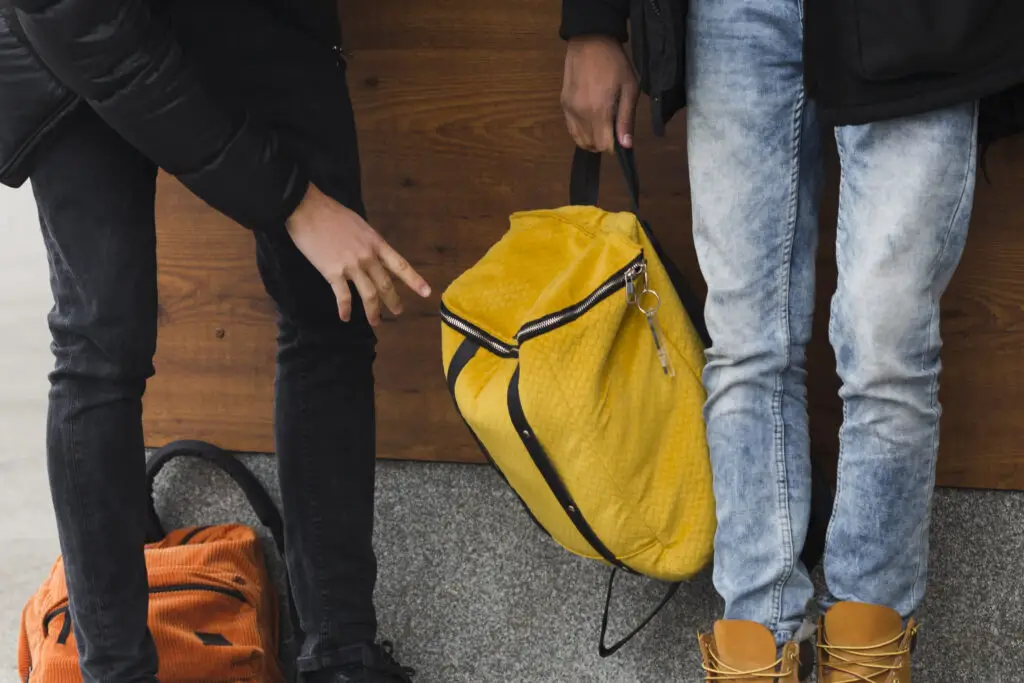
Start by placing your largest items, such as your camera body and larger lenses, in the bag first.
Use the dividers to create separate compartments that fit these items snugly. Then, add smaller items, such as filters, batteries, and cables, in designated pockets or smaller compartments.
Here, what kind of fabric are camera strap made from?
Using the dividers effectively not only protects your equipment but also allows for easy access during your shoot. You won’t have to dig through your bag to find what you need; everything will be neatly organized and readily accessible.
If you have additional accessories that need protection, consider using padded pouches or cases within the bag. This added layer of protection is especially useful for delicate items like microphones or small lenses.
Overall, utilizing the dividers properly helps create a structured packing system, making your workflow smoother and more efficient.
3. Prioritize Accessibility
When packing your Porta Brace camera bag, prioritizing accessibility is crucial for a smooth shooting experience.
Identify the items you will need most frequently during your shoot and place them in easy-to-reach compartments or pockets. This ensures you can grab what you need quickly without rummaging through the entire bag.
For instance, if you anticipate changing lenses often, keep your most-used lenses in the top compartment or side pockets.
Similarly, accessories like batteries, memory cards, and lens cleaning kits should be easily accessible, ideally in front-facing pockets or designated pouches. This way, you can make adjustments or changes swiftly, saving valuable time on set.
Consider the flow of your shooting process when organizing your bag.
Think about how often you’ll need to access certain items and pack accordingly. If you’ll be using audio equipment, ensure that microphones and recorders are positioned conveniently for quick access.
Lastly, be mindful of weight distribution. While you want to keep frequently used items at the top, also ensure that heavier items are placed at the bottom for better balance.
Here, can camera bag be used a cooler?
Prioritizing accessibility not only enhances efficiency but also reduces the risk of dropping or damaging equipment while searching for what you need.
4. Maintain Weight Balance
When packing your Porta Brace camera bag, maintaining weight balance is key for comfort and ease of transport. Proper weight distribution helps you carry the bag more comfortably, especially during long shoots or when navigating challenging terrains.
Start by packing your heaviest items at the bottom of the bag.
This could include your camera body, larger lenses, or any other heavy accessories. Keeping these items low in the bag creates a stable center of gravity, reducing strain on your back and shoulders.
Next, place medium-weight items, such as smaller lenses and audio equipment, in the middle compartments.
Finally, lighter items, such as filters, cleaning kits, and extra batteries, should be stored in top compartments or side pockets. This layered approach not only balances the bag but also allows for easier access to lighter, frequently used items.
Additionally, be cautious of overpacking. It’s tempting to bring all your gear, but excess weight can lead to discomfort and fatigue. Evaluate your packing list and consider leaving behind items you may not need for the shoot.
By maintaining weight balance, you’ll find that your Porta Brace camera bag is easier to carry, helping you stay focused on your work without the distraction of an unwieldy load.
Here, how to make a fanny pack camera bag?
5. Protect Sensitive Equipment
Protecting your sensitive equipment is paramount when packing your Porta Brace camera bag.
Cameras, lenses, and audio gear are often delicate and can be easily damaged if not packed properly. By taking the right precautions, you can ensure your equipment remains safe during transport.
Start by using padded dividers and compartments to create a cushioning effect around your gear. For particularly delicate items, consider using additional protective cases or padded pouches.
For instance, if you have a fragile lens or microphone, pack it in its original case or a dedicated padded sleeve before placing it in the bag.
Additionally, use soft cloths or lens wraps to provide extra protection for your lenses. Avoid placing heavy items on top of fragile gear, as the pressure can lead to damage. Instead, create a layer of protection by placing heavier items underneath and surrounding them with lighter, padded items.
Finally, consider the weather conditions you might encounter. If rain or moisture is a possibility, make sure to pack waterproof covers or utilize the weather-resistant features of your Porta Brace bag.
By prioritizing protection, you’ll safeguard your investment and maintain the functionality of your equipment for many shoots to come.
6. Keep Cables Organized
Organizing cables is an essential step when packing your Porta Brace camera bag. Loose cables can easily become tangled, making it frustrating to find the right one during a shoot.
A well-organized cable system saves time and minimizes stress, allowing you to focus on capturing the best shots.
Start by grouping similar cables together, such as audio cables, charging cables, and video cables. Consider using cable ties, Velcro straps, or small pouches to keep each group neatly bundled. This prevents them from tangling and allows for quick access when needed.
If your Porta Brace bag has dedicated cable pockets or compartments, utilize these features to store cables in an organized manner. Labeling cables can also be helpful, especially if you have multiple similar-looking options.
A simple tag or a piece of tape can help you identify each cable quickly.
Additionally, consider carrying spare cables and connectors, as they can be lifesavers if something goes wrong on set. By keeping your cables organized, you’ll streamline your workflow and ensure that you can tackle any technical challenges that arise with ease.
7. Check Weather Protection
When packing your Porta Brace camera bag, it’s essential to consider weather protection.
Depending on the location and time of year, you may encounter rain, snow, or extreme heat, all of which can be detrimental to your camera gear. Being prepared for various weather conditions helps safeguard your equipment and ensures you can continue shooting regardless of the elements.
Begin by checking the weather forecast for your shooting location. If rain is predicted, ensure you have a waterproof cover for your Porta Brace bag. Many Porta Brace bags come with built-in weather-resistant features, but additional covers provide extra protection.
Here, does a camera bag count as a carry on?
Make sure these covers are easily accessible and can be quickly deployed if needed.
Additionally, consider the materials of your gear. If you’re carrying sensitive items like microphones or external recorders, store them in padded, waterproof cases within the bag.
Avoid exposing your equipment to direct sunlight for prolonged periods, as this can lead to overheating and damage.
Lastly, be mindful of condensation. If you’re moving between extreme temperatures (like coming indoors from the cold), allow your equipment to acclimate to the new environment before opening your bag.
By checking weather protection measures, you can ensure that your gear remains safe and functional, allowing you to focus on your creative work without worry.
5 steps to pack porta brace camera bag
Here are five essential steps to effectively pack your Porta Brace camera bag:
1. Gather Your Equipment
The first step in packing your Porta Brace camera bag is to gather all the equipment you plan to bring for your shoot.
Start by making a comprehensive list of your gear, including your camera bodies, lenses, tripods, lighting equipment, audio gear, and any accessories you may need, such as batteries, memory cards, and lens cleaning kits.
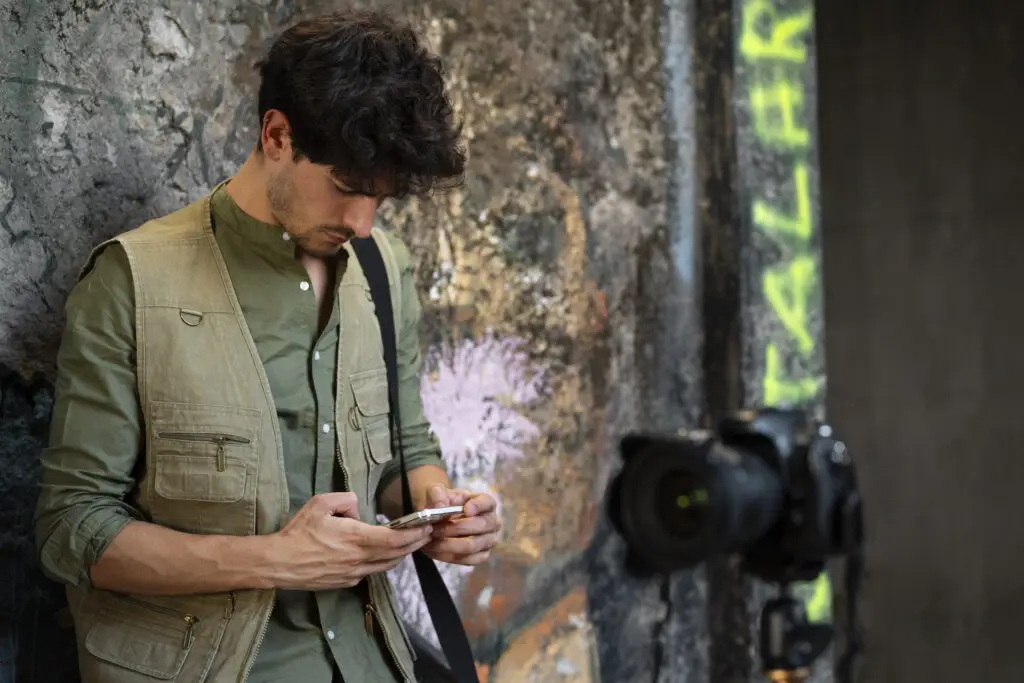
Once you have your list, physically collect all your items in one place. This allows you to assess what you have and what you might need for the specific shoot.
Consider the nature of your project—whether it’s a video shoot, a photography session, or an event coverage—to determine which items are essential.
Organizing your gear at this stage also helps identify any missing components. For example, do you have enough batteries for the duration of your shoot? Are there any essential lenses that you usually rely on?
This gathering process sets the foundation for effective packing.
By knowing exactly what you’re bringing, you can make informed decisions on how to arrange everything in your Porta Brace camera bag, ensuring that you have the right gear on hand without unnecessary items that may add weight. Overall, this initial step is crucial for an organized and efficient packing process.
2. Organize by Category
After gathering your equipment, the next step is to organize your items by category.
This organization ensures a streamlined packing process and makes it easier to locate specific gear during your shoot.
Grouping similar items together not only maximizes space but also reduces the risk of forgetting important components.
Start by categorizing your gear into logical groups. For example, you might have one group for camera bodies, another for lenses, and a third for accessories like microphones and lighting equipment. Within these categories, consider further organizing by size or function. For instance, place prime lenses together and zoom lenses in a separate section.
Once you’ve established your categories, lay out your items on a flat surface to visualize how they will fit in your Porta Brace bag. This step allows you to assess the best way to pack everything while ensuring that frequently used items are easily accessible.
Here, how to use dividers in your camera bag?
As you organize, consider the specific compartments in your Porta Brace bag. Most models come with customizable dividers that allow you to create tailored sections for each category.
This organization not only protects your gear from damage but also enhances your workflow during the shoot. By organizing by category, you’ll save time and frustration, allowing you to focus on capturing the perfect shots.
3. Use Custom Dividers
Using custom dividers is a crucial step in packing your Porta Brace camera bag effectively.
These dividers are designed to create individual compartments that can accommodate various pieces of equipment securely.
Proper use of dividers ensures your gear is protected from impact and movement during transport, minimizing the risk of damage.
Start by adjusting the dividers to fit the specific items you’re packing. Porta Brace bags often come with adjustable or removable dividers, allowing you to create a tailored layout for your gear.
For larger items, like camera bodies or long lenses, position dividers to create snug compartments that hold these items securely.
Next, consider the arrangement of your gear within the bag. Place heavier items, such as your camera body, at the bottom and larger lenses alongside them.
Use dividers to separate these from smaller accessories like batteries and cables, which can be stored in smaller compartments above. This layered approach not only protects your gear but also helps maintain a balanced load for comfortable carrying.
Additionally, utilize the soft, padded material of the dividers to provide extra cushioning for sensitive items. For example, if you have a delicate microphone or lens, encase it with extra padding to prevent movement.
By using custom dividers effectively, you’ll create a well-organized and protective environment for your equipment, ultimately enhancing your overall shooting experience.
4. Ensure Easy Accessibility
Ensuring easy accessibility is an important step when packing your Porta Brace camera bag.
Quick access to essential items can make a significant difference during a shoot, allowing you to respond to changing conditions and capture moments without delay.
Begin by identifying the items you will need most frequently during your shoot.
Typically, this includes your camera body, primary lenses, extra batteries, memory cards, and any frequently used accessories like microphones or lighting equipment. Position these items in the top compartments or front pockets of your bag for immediate access.
As you pack, think about the workflow of your shoot. If you anticipate changing lenses often, ensure that your most-used lenses are easy to reach. Consider utilizing the bag’s side pockets or quick-access compartments to store these items, allowing you to swap them out with minimal fuss.
Here, what kind of camera bag can you used on yankee stadium?
It’s also helpful to have a dedicated pocket for smaller accessories, like batteries and cables. Using zippered or mesh pockets can help you see what’s inside, making it easier to grab what you need quickly.
Lastly, keep in mind the importance of weight distribution. While you want frequently accessed items at the top, ensure that heavier items remain at the bottom for better balance.
By ensuring easy accessibility, you’ll create a more efficient workflow, allowing you to focus on your creativity during the shoot without unnecessary interruptions.
5. Double-Check Before Sealing
The final step in packing your Porta Brace camera bag is to double-check everything before sealing it up.
This crucial step helps ensure that you haven’t forgotten any essential items and that your gear is organized and secure for transport.
Start by reviewing your initial inventory list. Cross-check each item to ensure it’s in the bag and properly packed. This step can prevent the stress of discovering that you’ve left behind an essential piece of equipment once you arrive at your shoot location.
While you’re checking your list, take a moment to assess the overall organization of your bag.
Ensure that frequently used items are easily accessible, and that dividers are securely holding your gear in place. This will save you time and frustration during the shoot.
Additionally, inspect your bag for any loose items or cables that might have slipped into unwanted areas.
Make sure everything is securely stored, as this minimizes movement during transport, reducing the risk of damage.
Finally, close and zip your bag, ensuring that all compartments are securely fastened. If your bag has additional weather protection features, like rain covers or flaps, make sure they are in place as well.
By double-checking everything before sealing your bag, you’ll be fully prepared and confident that you have all the necessary gear for a successful shoot.
5 Methods to pack porta brace camera bag
Here are five effective methods to pack your Porta Brace camera bag:
1. Layering Method
The layering method involves stacking your equipment in a way that promotes balance and accessibility.
Start by placing heavier items, like your camera body and large lenses, at the bottom of the bag. This creates a stable foundation, minimizing strain when carrying.
Next, add medium-weight items, such as smaller lenses and audio gear, in the middle layers.
Finally, pack lighter accessories, like batteries and filters, at the top or in side pockets for easy access.
This method not only protects your gear from impact but also ensures that frequently used items are within reach. The layered approach also prevents your equipment from shifting during transport, reducing the risk of damage.
2. Compartmentalization Method
The compartmentalization method utilizes the various compartments and dividers within your Porta Brace camera bag to keep gear organized.
Start by grouping similar items, such as camera bodies, lenses, and accessories, and allocate specific compartments for each group. For example, place all lenses in one section, while storing batteries and memory cards in another.
Use adjustable dividers to create snug compartments that prevent movement and provide cushioning. This method not only enhances organization but also allows for quick access to specific items during a shoot.
Additionally, by compartmentalizing your gear, you can easily keep track of what you have and quickly identify any missing items before heading out.
3. Protective Pouch Method
The protective pouch method focuses on safeguarding delicate equipment within your Porta Brace camera bag.
For sensitive items such as microphones, filters, or small lenses, consider using padded pouches or cases to provide extra cushioning. These pouches can be placed inside the bag to create additional layers of protection.
When packing, wrap delicate items in soft cloths or dedicated pouches to prevent scratches or impact damage. This method ensures that fragile gear is well-protected, especially during transport.
Here, how to make a camera tripod bag?
By using protective pouches, you can have peace of mind knowing that your valuable equipment is safe from bumps and jostles, allowing you to concentrate on capturing great content.
4. Quick Access Method
The quick access method emphasizes easy retrieval of essential gear during a shoot.
To implement this method, identify the items you will need most frequently, such as your camera body, primary lens, or audio equipment. Pack these items in top compartments or designated quick-access pockets.
Ensure that they are positioned for immediate reach, allowing for efficient gear swaps or adjustments without slowing down your workflow. Use zippered or mesh pockets to keep smaller accessories organized while maintaining visibility.
This method not only enhances efficiency during a shoot but also helps you respond swiftly to changing conditions, ensuring that you never miss a crucial moment.
5. Minimalist Packing Method
The minimalist packing method encourages you to bring only the essentials, reducing the bulk and weight of your Porta Brace camera bag. Begin by evaluating your shooting needs and determining which equipment is absolutely necessary for the task at hand.
Focus on essential items like a single camera body, one or two versatile lenses, and a limited number of accessories. This approach simplifies packing and enhances mobility, making it easier to navigate tight spaces or challenging terrains.
Additionally, carrying less gear reduces the risk of forgetting items or feeling overwhelmed by choices during a shoot.
By embracing minimalism, you can maintain a streamlined workflow, enabling you to focus on your creative vision without unnecessary distractions.
5 Benefits to pack porta brace camera bag
Here are five benefits of packing your Porta Brace camera bag:
1. Enhanced Protection
One of the primary benefits of packing your Porta Brace camera bag is the enhanced protection it offers for your valuable equipment.
Designed with durable, weather-resistant materials and padded compartments, these bags safeguard your camera bodies, lenses, and accessories from impacts, scratches, and environmental elements.
By organizing your gear with dividers and protective pouches, you can prevent movement within the bag, which minimizes the risk of damage during transport.
This protection is especially crucial when traveling to various shooting locations, where equipment can be subjected to bumps and jostles.
With a well-packed Porta Brace bag, you can have peace of mind knowing that your gear is secure, allowing you to focus on your creative work without worrying about potential damage.
2. Improved Organization
Packing your Porta Brace camera bag allows for improved organization of your equipment, making it easier to locate and access your gear during a shoot.
With adjustable dividers and multiple compartments, you can categorize your items by type or function, such as camera bodies, lenses, and accessories.
This structured organization not only helps prevent items from getting lost or misplaced but also enhances your workflow.
When everything has its designated space, you can quickly grab what you need without rummaging through the bag.
Additionally, organized packing helps you keep track of your gear, making it easier to identify if anything is missing before you leave for a shoot.
Overall, improved organization leads to greater efficiency, saving you time and frustration on set.
3. Increased Accessibility
Packing your Porta Brace camera bag effectively increases accessibility to your essential gear during a shoot.
By prioritizing frequently used items and placing them in easily reachable compartments, you can respond quickly to changing situations.
For instance, having your primary camera and lens in top pockets allows for seamless transitions between shots.
This method also extends to accessories like batteries and memory cards, which can be stored in quick-access sections for immediate retrieval.
Increased accessibility streamlines your workflow, enabling you to make adjustments and changes on the fly without wasting time searching for equipment.
This efficiency is especially important during fast-paced shoots where every second counts, ensuring that you can capture the perfect moment without unnecessary delays.
4. Lightweight Portability
Another significant benefit of packing your Porta Brace camera bag is the lightweight portability it offers.
By carefully selecting and organizing your gear, you can maintain a manageable weight that makes it easier to carry your equipment over long distances or challenging terrains.
The design of Porta Brace bags emphasizes ergonomic features, such as padded straps and handles, to provide comfort during transport.
When you pack wisely, avoiding the temptation to bring unnecessary gear, you’ll find that your bag is easier to handle, allowing you to stay focused on your shoot rather than struggling with heavy loads.
Lightweight portability enhances your mobility and agility, making it possible to navigate crowded locations or outdoor settings more effectively, ultimately leading to a more enjoyable and productive shooting experience.
5. Peace of Mind
Packing your Porta Brace camera bag thoughtfully provides peace of mind, allowing you to focus on your creative work without the anxiety of potential equipment damage or disorganization.
Knowing that your gear is secure and well-protected gives you confidence as you head into various shooting environments.
With a well-organized bag, you can trust that you have all the necessary equipment at your fingertips, eliminating concerns about forgetting essential items.
This reassurance can significantly enhance your performance on set, enabling you to concentrate on capturing the best shots and telling your story effectively.
Furthermore, the durable construction and weather-resistant features of Porta Brace bags provide an added layer of security, ensuring that your investment is safe.
Ultimately, peace of mind is invaluable for any photographer or videographer, allowing you to immerse yourself fully in your creative process.
Related faq’s
What equipment should I pack in my Porta Brace camera bag?
When packing your Porta Brace camera bag, consider including essential items such as your camera body, lenses, tripod, batteries, memory cards, audio equipment, and any other accessories relevant to your shoot.
It’s important to assess the specific needs of your project and only bring the gear necessary for that particular job to avoid overpacking.
How do I organize my gear within the bag?
To organize your gear, utilize the adjustable dividers and compartments within your Porta Brace bag.
Group similar items together, such as placing all lenses in one section and batteries in another. This organization helps keep your equipment secure and easily accessible during your shoot.
What is the best way to protect delicate equipment?
To protect delicate equipment, use padded pouches or soft cloths when packing sensitive items like microphones, filters, or small lenses.
Place these protective items in compartments where they won’t be subject to heavy pressure or movement. This extra cushioning helps prevent damage during transport.
How do I ensure easy access to frequently used items?
To ensure easy access, identify the items you will need most frequently and pack them in top compartments or quick-access pockets.
Position your primary camera and lens for immediate reach, so you can make adjustments quickly without having to dig through the bag.
Should I worry about weight distribution when packing?
Yes, weight distribution is essential when packing your Porta Brace camera bag.
Place heavier items, such as camera bodies and larger lenses, at the bottom of the bag to create a stable center of gravity. This approach helps reduce strain on your back and shoulders, making it more comfortable to carry.
How can I maximize space within the bag?
To maximize space, utilize all available compartments and adjust the dividers to create snug fits for your gear.
Be mindful of packing techniques, such as layering items and rolling cables to prevent tangling. Avoid overpacking, as this can make it difficult to access items and add unnecessary weight.
What should I do before sealing the bag?
Before sealing your Porta Brace camera bag, double-check your packing list to ensure that you have included all necessary items.
Assess the organization of your gear and ensure that everything is secure and accessible. Finally, ensure that all compartments are closed and any weather protection features are in place for added security.
Conclusion
Packing your Porta Brace camera bag effectively is crucial for protecting your valuable equipment and ensuring a smooth shooting experience.
By gathering your gear, organizing it into categories, using custom dividers, and prioritizing accessibility, you can create a well-structured packing system.
Remember to maintain proper weight distribution and utilize protective pouches for delicate items.
A thoughtful packing process not only safeguards your equipment from damage but also enhances your workflow, allowing you to focus on your creative vision.
With these strategies in place, you’ll be well-prepared for any shoot, ensuring that your gear is organized and easily accessible when you need it.

